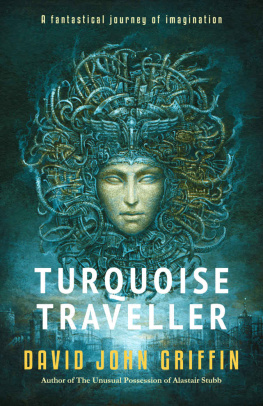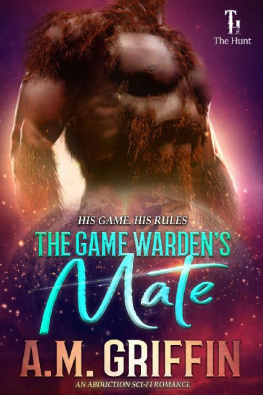Mark Griffin - A Hundred or More Hidden Things: The Life and Films of Vincente Minnelli
Here you can read online Mark Griffin - A Hundred or More Hidden Things: The Life and Films of Vincente Minnelli full text of the book (entire story) in english for free. Download pdf and epub, get meaning, cover and reviews about this ebook. year: 2010, publisher: Da Capo Press, genre: Non-fiction. Description of the work, (preface) as well as reviews are available. Best literature library LitArk.com created for fans of good reading and offers a wide selection of genres:
Romance novel
Science fiction
Adventure
Detective
Science
History
Home and family
Prose
Art
Politics
Computer
Non-fiction
Religion
Business
Children
Humor
Choose a favorite category and find really read worthwhile books. Enjoy immersion in the world of imagination, feel the emotions of the characters or learn something new for yourself, make an fascinating discovery.
- Book:A Hundred or More Hidden Things: The Life and Films of Vincente Minnelli
- Author:
- Publisher:Da Capo Press
- Genre:
- Year:2010
- Rating:3 / 5
- Favourites:Add to favourites
- Your mark:
- 60
- 1
- 2
- 3
- 4
- 5
A Hundred or More Hidden Things: The Life and Films of Vincente Minnelli: summary, description and annotation
We offer to read an annotation, description, summary or preface (depends on what the author of the book "A Hundred or More Hidden Things: The Life and Films of Vincente Minnelli" wrote himself). If you haven't found the necessary information about the book — write in the comments, we will try to find it.
A Hundred or More Hidden Things: The Life and Films of Vincente Minnelli — read online for free the complete book (whole text) full work
Below is the text of the book, divided by pages. System saving the place of the last page read, allows you to conveniently read the book "A Hundred or More Hidden Things: The Life and Films of Vincente Minnelli" online for free, without having to search again every time where you left off. Put a bookmark, and you can go to the page where you finished reading at any time.
Font size:
Interval:
Bookmark:
Table of Contents

For Lester

INTRODUCTION
I WAS SIXTEEN YEARS OLD when I saw the movie that changed my life. During a summer vacation in which I was expected to evolve from sophomore to junior, I actually went a step further and found myself. My life-altering cinematic experience came courtesy of On a Clear Day You Can See Forever , the second-to-last directorial effort of the great Vincente Minnelli. This decidedly offbeat musical not only featured a time-traveling protagonist with paranormal powers but came complete with a poignant theme about the liberating effects of self-acceptancea message all too eagerly received by St. Dominic Regional High Schools resident misfit.
I watched On a Clear Day over and over in the summer of 1984. I found it healing and empowering. My friends thought I had lost it. They began to look at me funny. In an era dominated by Return of the Jedi and Ferris Buellers Day Off , was I actually claiming to have achieved some sort of cosmic consciousness through repeated viewings of a Barbra Streisand movie ? It was suggested that I should try getting out more often or maybe join a rugby team before it was too late. But after discovering that Village Voice critic Andrew Sarris had once referred to the object of my obsession as an underrated masterpiece, there was no stopping me. This high-level endorsement was the only excuse I needed to study said masterpiece with an even more attentive eye.
I was mesmerized by what Sarris had referred to as Minnellis morbidly beautiful mise en scne, and there was an unusual quality about the film that I was eager to reconnect with. Although On a Clear Day was a large and lavish major studio production, there was also something endearingly personal about it. Minnelli seemed to exhibit a genuine empathy for his heroine, who throughout the film grapples with the effects of a split self.
As I would soon discover, Daisy Gamblethe psychically gifted, identity-challenged chain-smoker at the center of On a Clear Day was the kind of conflicted character that Vincente Minnelli had practically patented. Here was another engaging oddball to add to the directors already impressive collection of visionaries, dreamers, artists, and outcasts. An awkward, un - assuming go-alonger, Daisy is so ashamed of her extrasensory abilities that she attempts to suppress this part of herself, terrified that someone will discover that she is (in her own words) un-normal. Besides her supernatural skills, Daisy harbors another secretthere is a more alluring, alternate identity buried within her. Several lifetimes ago, this neurotic wallflower from Mahwah, New Jersey, was Lady Melinda Tentrees, a clairvoyant noblewoman and 1814s It Girl. Melindas captivating personality, regal bearing, and eye-popping ensembles effortlessly upstage Daisys modern-day existence.
After coming to terms with her previous incarnations, Daisy experiences an exhilarating moment of self-discovery: The most important person you will ever be is the one that you are right now. As she begins to blossom as vibrantly as the azaleas, peonies, and posies that have surrounded her in virtually every frame, Daisy embraces her authentic self: On a clear day rise and look around you and youll see who you are . On a clear day, how it will astound you that the glow of your being outshines every star. I took the message to heart. And apparently so had Minnelli. On a Clear Day had inspired me to look at myself in a very different way. The gift of self-empowerment had been bequeathed to an insecure adolescent in need of reassurance. I was beyond grateful and very curious to know more about the man behind the movie.
I had been a card-carrying Judy Garland fanatic since childhood, and because I had seen all the films in which the worlds greatest entertainer had been directed by her second husband, I thought I was rather well acquainted with Vincente Minnelli. Largely because of Meet Me in St. Louis , I equated his name with an unmistakable style and the kind of exquisitely crafted extravaganzas that had long ago vacated the neighborhood movie house and taken up residence on the late show. Though, as I soon learned, there was more to Minnelli than what initially dazzled the eye.
During the remainder of my summer vacation, I ravenously consumed some of the other important titles in the directors oeuvre: The Pirate , An American in Paris , The Band Wagon , Tea and Sympathy, Gigi , and Minnellis tragically mutilated final film, A Matter of Time . While these movies were often boldly innovative, even ahead of their time, somehow they also felt strangely familiar. Despite the fact that almost all of these pictures had been produced long before I was born, it was as though Vincente Minnelli had somehow been eavesdropping on my dreams. No, better than that he was telling the story of my life on film, and by this point, my friends were begging me to get out more often. Though I really didnt care. Minnellis movies were taking me to important places within myself and that was all that mattered.
Eventually, I was able to see beyond my sixteen-year-olds self-absorption and recognize that Minnelli wasnt telling the story of my life on screen but his own. Or at least it seemed so. My romanticism has never precluded me from my work which, in the final analysis, is the story of my life, Minnelli observed in his 1974 memoir. A lifelong workaholic, the director was probably referring to the countless hours he put in on Hollywood soundstages over the years. Though I hoped that what he also meant by this was that his work actually contained the story of his life. For I purely loved the notion of Minnelli as a mild-mannered subversive who labored under the constraints of the studio system yet somehow managed to sneak autobiographical elements into his films buried-treasure style.
If Minnellis movies are indeed autobiographies in code (and many can certainly be read that way), his achievement is all the more extraordinary when one considers the fact that all but three of his pictures were made during his twenty-six-year association with Metro-Goldwyn-Mayer, Hollywoods preeminent Dream Factorybut a factory nonetheless. I was intrigued. Just how had Vincente managed to produce such self-reflexive and personal work while toiling away at the most conservative and lockstep of the major studios? And what exactly was the work telling us about his life?
After scrutinizing the films, I started reading everything I could about Minnelli. I was interested in what made Vincente tick, not only as an artist but as an individual, though most of the information I could find about him focused almost exclusively on his directorial achievements. Before too long, references to auteur theories, surrealism, and Cahiers du cinma began creeping into my conversation. I learned that although Minnelli had won an Oscar in 1959 (for his direction of Gigi ) and several of his titles invariably turned up on lists of the Best Films Ever Made, he was more acclaimed in Europe than he was in his own country.
I now felt very protective, almost proprietary about my favorite director, and it irked me that he was sometimes treated like a second-class citizen. Although most critics and film scholars would readily acknowledge that Vincente Minnelli was the master of the decorative image, they seemed reluctant (until recently) to discuss his work in the same way one would approach Orson Welles, John Ford, or Jean-Luc Godard. Why? Did Judy Garland, Technicolor, and a score by Lerner and Loewe automatically disqualify Minnelli from being taken seriously as a director?
Next pageFont size:
Interval:
Bookmark:
Similar books «A Hundred or More Hidden Things: The Life and Films of Vincente Minnelli»
Look at similar books to A Hundred or More Hidden Things: The Life and Films of Vincente Minnelli. We have selected literature similar in name and meaning in the hope of providing readers with more options to find new, interesting, not yet read works.
Discussion, reviews of the book A Hundred or More Hidden Things: The Life and Films of Vincente Minnelli and just readers' own opinions. Leave your comments, write what you think about the work, its meaning or the main characters. Specify what exactly you liked and what you didn't like, and why you think so.












